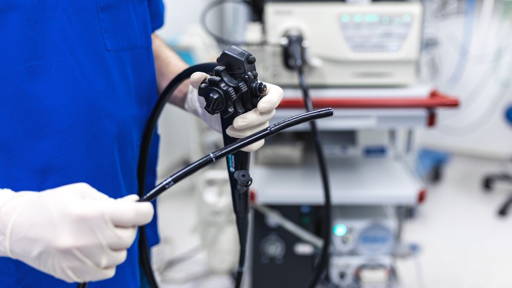Although more and more Dutch hospitals are strategically embracing AI, actual implementation remains largely small-scale. That is according to the AI Monitor Hospitals 2025 by M&I Partners. The biggest bottlenecks are in AI awareness, data management, financial resources and transformation capability. At the same time, the focus on AI strategies and policies is growing, and AI in operations is gaining ground. Generative AI is now used in three-quarters of hospitals. Workload reduction remains the main driver, but the impact on healthcare costs and patient care is still uncertain. The path to full AI readiness has begun, but there is still a long way to go.
M&I's AI Monitor Hospitals 2025 shows that Dutch hospitals are still in the early stages of AI-readiness. The biggest challenges lie with AI awareness, knowledge and experience of employees, which is not yet in order at half of the hospitals (51%). Many challenges also lie in data management and governance (45%), financial space (45%) and transformational capacity for implementation (43%). Only one-fifth (20%) of hospitals have these elements mostly or fully in order, while half have none in place. No hospital fully meets all the requirements.
Strategic focus grows
Yet the strategic focus on AI is growing. Over a quarter of hospitals now have an AI strategy (+2% vs. last year) and 61% are working on it (+10%). The number of hospitals without an AI strategy has dropped to 11% (-12%). In addition, 50% of hospitals now have an AI policy (+20%) that establishes guidelines and working arrangements.
Adoption and Use Generative AI Although AI applications are still largely small-scale, use is increasing. Half of hospitals are implementing AI on a limited scale, a third on a medium scale, and only one hospital is implementing AI on a large scale. In practice, hospitals have an average of five AI applications operational, two of which have proven valuable.
Generative AI is now used by 75% of hospitals (+18%), mainly for transcriptions, summaries and text formatting. Traditional AI is still more commonly used (83%). Diagnostic AI remains dominant within radiology (68%), but AI applications within operations - such as healthcare administration (48%) and logistics (40%) - are gaining ground.
In 30% of hospitals, there is no clear ultimate responsibility for AI. At other hospitals, the responsibility lies with the Board of Directors (26%), the CIO/CDO (17%) or an AI board (13%). In addition, the number of formal AI teams is growing (57%; +15%), while the number of individual AI champions is decreasing (-24%).
Alleviation of workload main driver
Just like two years ago, most hospitals are deploying AI primarily as a (partial) solution to reduce the workload of healthcare staff (100%; +11%) and improve quality of care (85%; +16%). Two-thirds of hospitals expect AI to positively impact the employee experience, but expectations about impact on healthcare costs are mixed: 39% expect lower costs, while 31% anticipate an increase.
Hospitals recognize the potential of AI, but full AI readiness remains a challenge for now. The focus now is on strategy, policymaking and increasing AI expertise within healthcare organizations. The AI Monitor Hospitals can be downloaded here (pdf, in Dutch).









